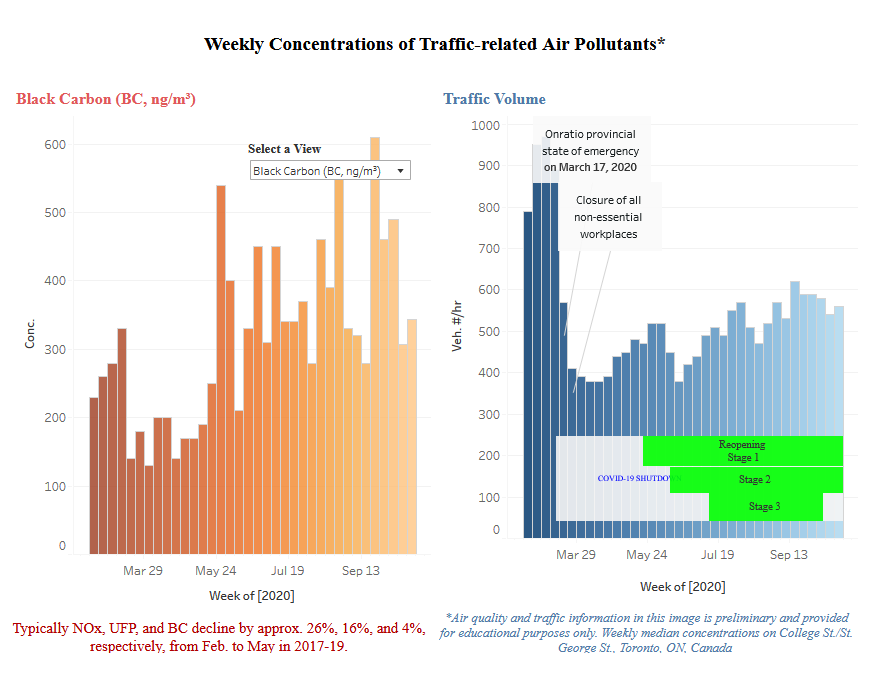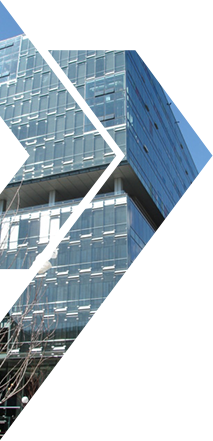SOCAAR's Field Measurement Facility is located at 200 College Street and is continuously monitoring the level of air pollutants. The unprecedented measures taken in Toronto in order to prevent the spread of COVID-19 have had a rapid and significant impact on air pollution in the downtown area.
The following graphs show the evolution of the traffic volume as well as major traffic related air pollutants measured at our facility between February 16 and September 13, 2020.
Traffic-related Air Pollutants
Black Carbon (BC) containing particles are produced by the incomplete combustion of fossil fuels. Diesel engines create much more than cars so in cities they are a good indicator of diesel related traffic pollution. No standard exists yet for outside air. As a reference, the Netherlands has proposed a standard for workers exposed to diesel exhaust of 1400 ng/m3.
Nitrogen Oxides (NOx) such as nitrogen monoxide (NO) and nitrogen dioxide (NO2) are emitted in vehicle exhaust and other combustion sources. Diesel engines create much more than cars so in cities they are a good indicator of diesel related traffic pollution. The 2020 annual Canada Ambient Air Quality Standard for NO2 is 17 parts per billion (ppb).
Ultrafine Particles (UFP) are the smallest airborne particle with diameters less than 100 nanometres. In cities they are emitted by vehicles and other combustion sources but can also be produced naturally. No air quality standard exists yet. As a reference, clean indoor air typically contains less than 5000 UFP particles/cm3.


